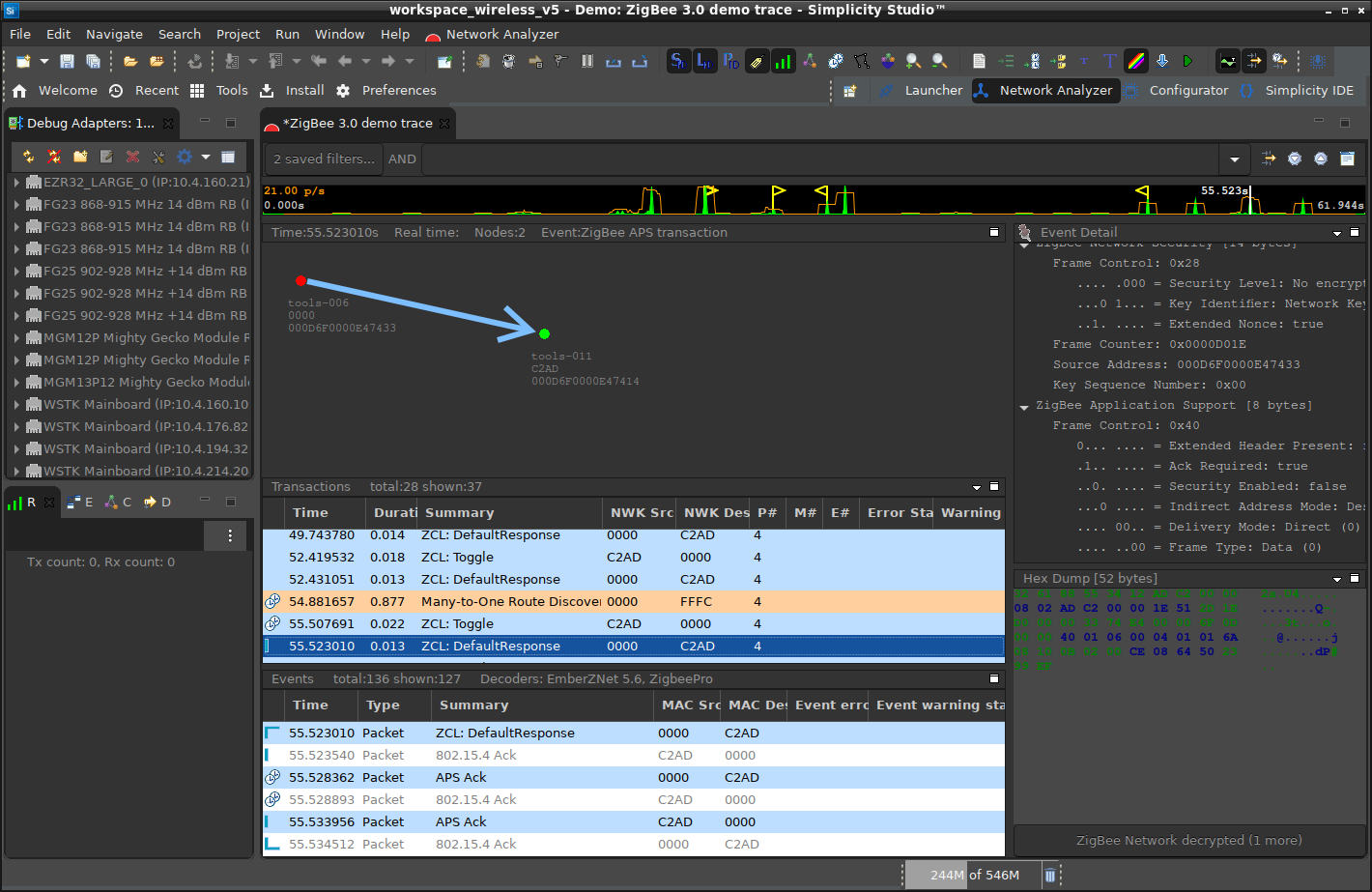Network Analyzer#
Simplicity Studio® 5 (SSv5)'s Network Analyzer enables debugging of complex wireless systems. This tool captures a trace of wireless network activity that can be examined in detail live or at a later time.


More than simply a packet sniffer, the Network Analyzer works with the data sniffer interface on the Silicon Labs wireless chips to provide direct feedback from the baseband radio of each device, allowing any supported radio to report detailed packet transmission and reception data, such as timestamps, link quality (or LQI), receive sensitivity (or RSSI), and CRC pass/fail results, all without any software overhead.
With SSv5, any PTI-enabled Silicon Labs platform can record the radio activity regardless of the application firmware that is being used, so there’s no need to have a dedicated sniffer device installed to catch the traffic. The Network Analyzer also enables capture from multiple sources simultaneously into the same log file without falsely duplicating packets. This enables the developer to compare how well different radios in the network heard the same transmission.
In cases when detail is not desired, Network Analyzer makes it easier to understand the workings of a complex wireless protocol. Related packet events are automatically grouped into a Transactions pane within the capture view, allowing for quicker parsing of what’s happening during that portion of the traffic log. Quickly access statistics like total duration, number of related packets, number of point-to-point and end-to-end retries, and unexpected conditions like requests with missing responses or deliveries where expected acknowledgments are missing.
In addition to capturing packet events, Network Analyzer also captures asserts, debug prints, and many other events.
This guide contains the following sections:
Network Analyzer Interface: Provides a guided tour of all elements of the Network Analyzer Perspective.
Capturing Data and Managing Sessions: Describes how to perform live captures, and save and manage the resulting data.
Viewing Data in Editors: Goes into detail about working with the data presented in both the Stream Editor and the Large File Editor.
Filtering Captured Data: Explains how to focus on exactly what you need from a Network Analyzer session.
Multinetwork Considerations: Discusses how to manage nodes that belong to more than one network.
Custom Decoders: Explains the basics of how to create custom decoders.
Network Analyzer Preferences: Provides a reference for the many ways you can customize Network Analyzer to meet your needs.
